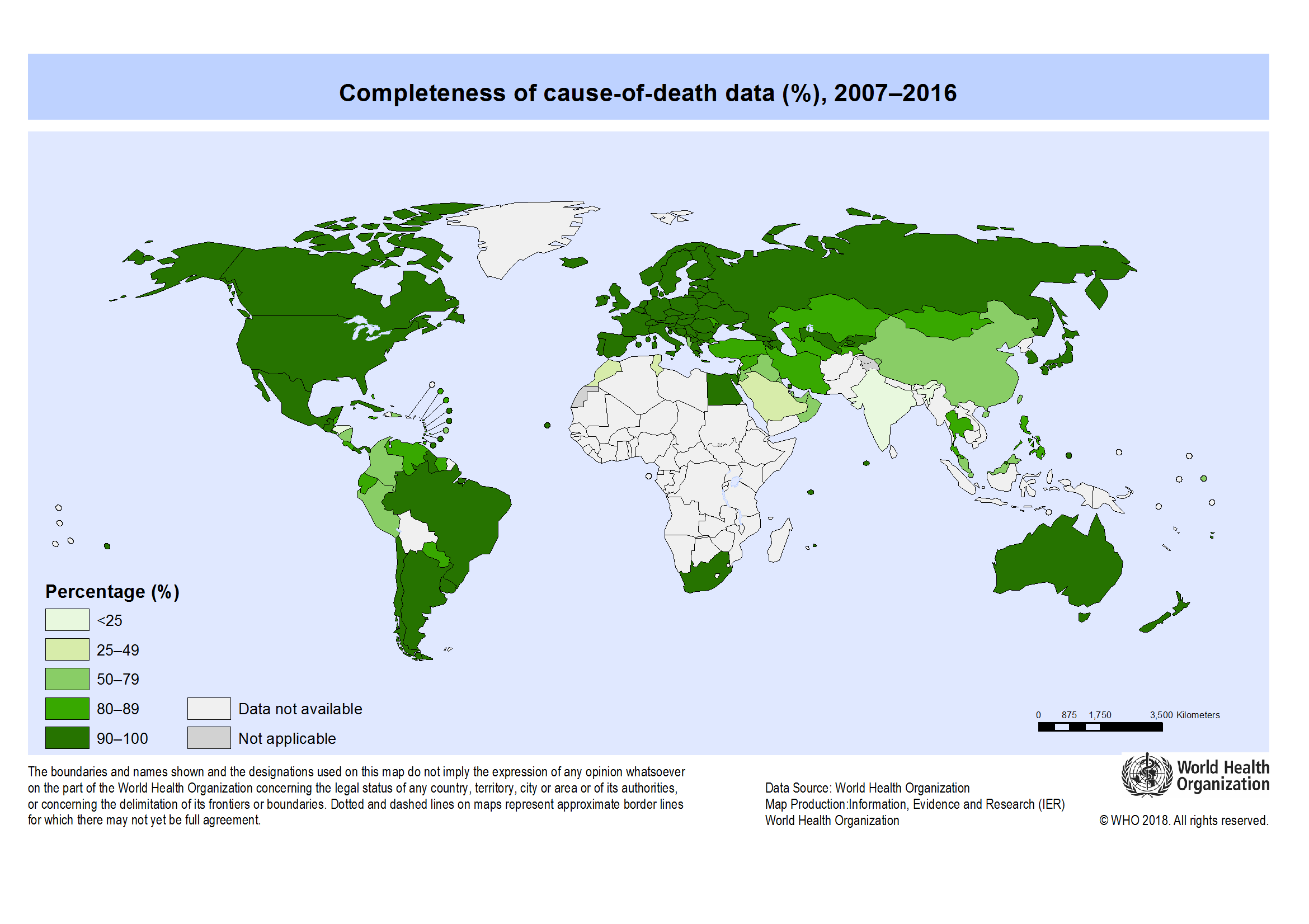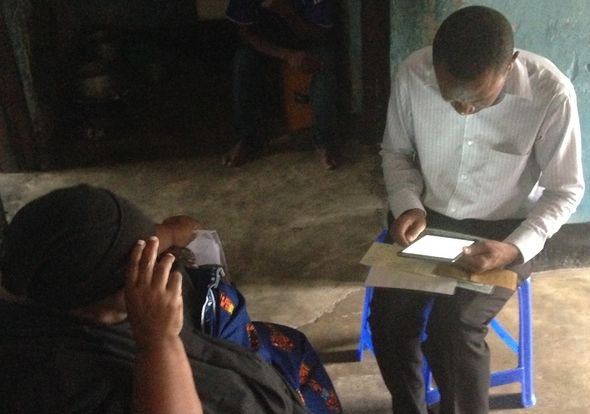“Count the dead!” might sound like an order given after some mediaeval battle, but in fact it’s a modern-day challenge for health authorities in many parts of the world. The World Health Organization (WHO) estimates that only about half of deaths in the world are properly registered. Their map shows that deaths are least likely to be registered in African and Asian countries.

Graphic: World Health Organization - Completeness of cause-of-death data, 2007-2016
Why is it important to count deaths?
Until 250 or so years ago, health statistics were almost non-existent throughout the world. Then a few public health visionaries like John Graunt in London and Pehr Wargentin in Sweden realised that if you know nothing about people’s health, a great starting point is collecting information on deaths - by age, sex and cause - to identify major health issues. Many countries (basically the darker green ones in the map) have since passed laws to make death registration compulsory. But these national systems - often known as civil registration and vital statistics or CRVS - are still missing or non-functional in many countries.
One of the problems for registering cause-of-death is that some kind of expertise is needed to decide on correct causes. This might come from post-mortem or autopsy examinations, but these are expensive and not often done. More often death certificates are provided by doctors caring for people who die in countries where registration is required. But for the half of the world’s deaths that aren’t registered, there’s often also a shortage of doctors... so what are the solutions?
Verbal autopsy
In recent decades, verbal autopsy has been developed as a low-tech way of getting cause-of-death information. Trained interviewers go through a series of questions with people who have information about a death, according to WHO standards, often collecting responses directly on a mobile device in the respondent’s home. They are not asking what the cause-of-death was, for the simple reason that’s not generally known.

Photo: Peter Byass - Verbal autopsy interview in Tanzania
But when the standard interview is complete, which takes maybe 15 minutes or so, all the responses from the interview can be quickly and automatically processed by standard software models like InterVA or SmartVA to assign likely causes of death and store the results. No input is needed from doctors - who generally have better things to do, like looking after people who are still alive!
Then what?
If verbal autopsies are carried out like this on a large scale, as a follow-up to otherwise unregistered deaths, a picture starts to build about what the important diseases in a local area might be, and what age and gender groups are most affected. As WHO rolls out exciting new programmes to change the world’s health for the better, measuring outputs is critical for tracking progress - and consistent cause of death is a great starting point. So let’s “Count the Dead!” as effectively as possible.